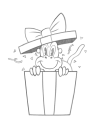Give a gift
Give a gift card for art students to use on anything in the Proko store.
Or gift this course:

About instructor
Founder of Proko, artist and teacher of drawing, painting, and anatomy. I try to make my lessons fun and ultra packed with information.





















Assignment: Draw the Pecs
Your homework is a two-parter. For part 1, do a tracing over a model photo of the pectoralis major and all of its bundles. If you’re not sure how to do a tracing, refer back to the Anatomy Tracing lesson. For part 2 of the assignment, invent the pectoralis major on top of photos of Skelly. I’ve provided reference photos for part 1 and 2 in the downloads. If you have the Skelly app, you can create your own pose and draw the pecs on top.